
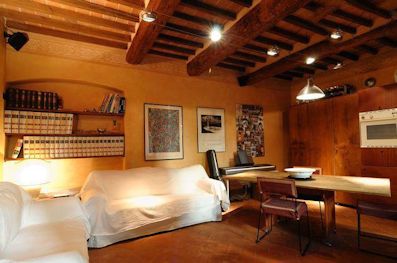
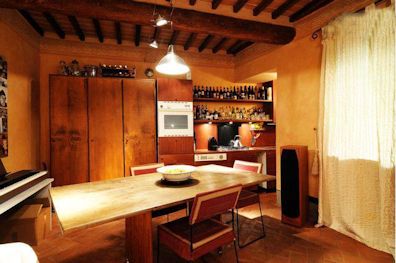
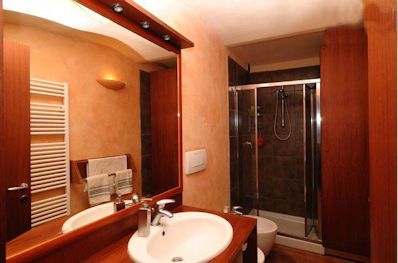
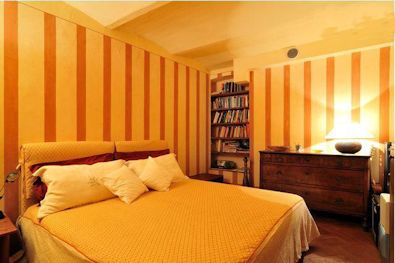
The Daily Diary of a Wandering Restaurateur
Off to Arezzo
Leaving Montepulciano was like leaving home for the last time ... except that with luck, it won't be the last time we're
here. However, we have come to know this area reasonably well after so many trips. This morning we packed up and headed off
to Arezzo, a first time visit for us. There's comfort in what we've come to know; I'll be interested to see what we discover
as we move out of our comfort zone. My colleague Steve Straus recently had this to say on the subject:
"Doing something for the first time has risks, unknowns, doubts, hesitancy, and fear. No wonder we slow down, stop trying
new things and become comfortable with sameness, repeatability, certainty. Life is to be lived. To try something new is to
live. Without the new, nothing happens but the same old. When was the last time you did something for the very first time?"
And so we left the comfort of what we had come to know and set off to explore a new place, solely because it was there
and we'd never checked it out. Will it be a series of delightful discoveries or a total bust? We've got the next three days
to find out.
Arezzo (pronounced ah-RET-so), about 50 miles southeast of Florence, is currently a city of around 100,000 or so. The roots
of the city date back to Etruscan times (6th Century BC). I won't try to recount the history of the town through the middle
ages, but suffice it to say that Arezzo had its period as a powerful and influential city state. Fortunately for us now,
shifting politics caused it to fall into economic and cultural decline in the mid 1300s, effectively ensuring that its
medieval center would remain largely preserved as it was.
The charm of the narrow lanes is an immersion in another time although it certainly creates some less-than-charming
realities for modern cars. There are a few parking spaces here and there in the historic center, but those are properly
restricted to local residents, so after unloading our bags, I had to quickly move on to a parking lot outside the city walls.
It was about a ten-minute walk through the labyrinth (without a map, I might add), but I somehow managed to find my way back
to the house. Now the challenge will be to see if I can find my way back to the car again on Thursday morning!





Our apartment (yeah, I used his pictures!) is in a 15th century building in the middle of the historic center of Arezzo.
The owner doesn't live here full time, so it appears that he rents it out in his absence, leaving the caretaking duties to
his elderly mother who has an apartment in an adjoining building. Mom is a hoot, with a great sense of humor, a real sense
of style (like most Italians) ... and virtually no English!
She's also pleasantly confused about how her son's apartment works. Our mutual struggles to figure out how to turn on the
electricity, operate the heat and such -- without a common language -- were one of those travel adventures we'll remember.
Fortunately, Margene has some rudimentary Italian, so we made it through ... but then, somehow we always know we will.
I'm still trying to sort out my feelings about the apartment. On one hand, the location is ideal and it's certainly an
improvement over living in a typical hotel room. It has its historical quirkiness, there's a lot more space to spread out,
we have a small kitchen and the price is right. Margene is a reader and really craves a comfy spot to settle in with her
Kindle and I have wifi and a place to set up my computer and write the daily diary.
On the other hand, the place feels dirty, we're working around all the owner's stuff and it feels more like a home invasion
than a vacation retreat ... rather like the creepy feeling of looking in a host's medicine cabinet. All in all, though, I'll
take this over a closet-sized hotel room any day, quirks and all.
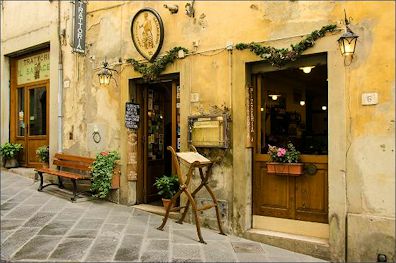
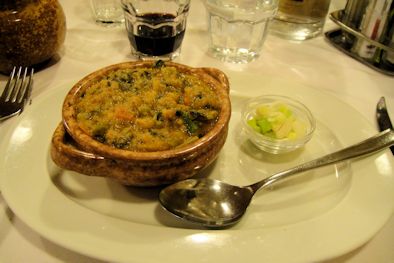
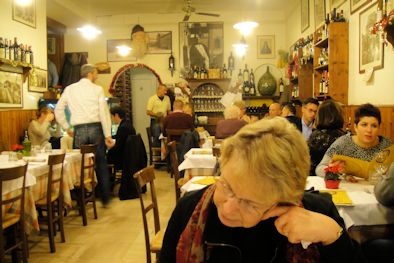
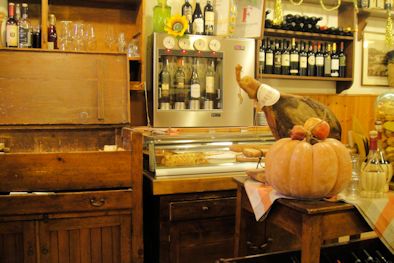
We arrived around 11am but it was closer to one by the time we'd sorted out the electricity, I had
returned from the parking lot and we'd somewhat settled in. The big question of the day became whether we would go out for
lunch and make that the meal of the day or wait until evening. Margene had eaten a bit while I was dropping the car but I
was hungry. Fortunately I had a chance to reconoiter the neighborhood a bit on my walk back from the parking lot and I
remembered passing a spot that looked good to me. It had the right vibe to it and a hand-painted sign on the street held two
magic words: "ribollita" and "pizza."
So I talked Margene into venturing out into the old town in search of a light bite. The streets around here are primarily
pedestrian-only and it felt good to not be subservient to the needs of automobiles for a change. We explored a bit and
eventually found our way back to the Trattoria Il Saraceno, the spot I had seen earlier.
It occurs to me that since I've been throwing around Italian restaurant terms for the past few days, perhaps I should
digress long enough for a bit of an explanation:
Ristorante: A restaurant. Here you'll find the ambiance a bit formal or at least the decor is thought out and cohesive. Tables are
usually dressed in linen; tableware and china all match. Waiters are professional and knowledgeable. The menu is usually
extensive and the food is often inventive (in other words, you may not find the traditional poor-man's dishes). Expect to
pay for all this service and forethought, though.
Trattoria: A trattoria is a small, family-run eatery that often serves a few choice regional dishes (think carbonara in Rome; ribollita
in Florence; pesto in Genoa), with many of the recipes past down from generation to generation. Mom or grandma usually cooks.
Dad handles the cash register. The kids wait tables. Decor can range from neat and comfortable to a real "hole in the wall."
Prices are usually much less than a ristorante.
Osteria: Back in the day, an osteria, or inn, was a local gathering spot where the old men played cards and drank local wine from
the innkeeper's oak barrels. It was almost like what we'd call a bar. Some served food but that wasn't the main focus. Today,
however, an osteria is an eating establishment very similar to a trattoria in that they serve simple, home-cooked meals.
Some have a "rustic" ambiance to them.
These days, the distinction between a trattoria and an osteria is becoming blurred, but given an option, I usually look for
an osteria to get closer to the local food sensibilities. As a rule it's also usually priced more reasonably ... although
lunch at Osteria La Porta yesterday was our most expensive meal of the trip so far. It was also the most memorable!
Meanwhile, back in Arezzo, Trattoria Il Saraceno delivered on decent food at a reasonable price. Their ribollita (6.50 euros)
was much thicker than what we'd found in Montepulciano with more bread, fewer beans and less liquid in the bowl. That may
just be local preference. It's very possible the "recipe" could vary from day to day depending on what's lying around. Such
is the nature of ribollita.
We added a simple Margherita pizza to share (5 euros), a liter of mineral water (2 euros) and a half liter of the local red
(5 euros) and had a comfortably filling meal at a reasonable price. It was certainly no culinary adventure, but it did hold
us nicely through the rest of the day.
© 2014 Restaurant Doctor